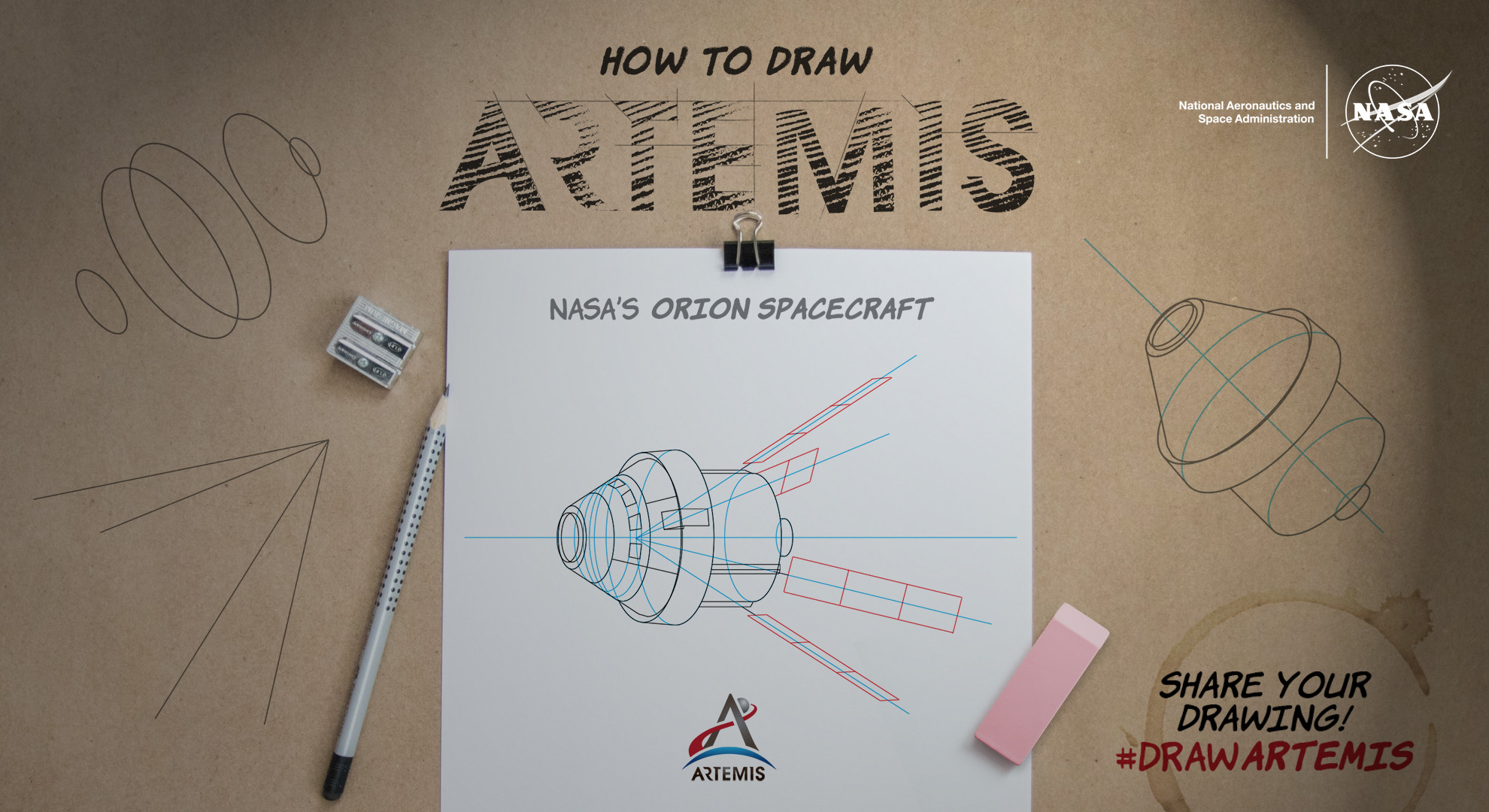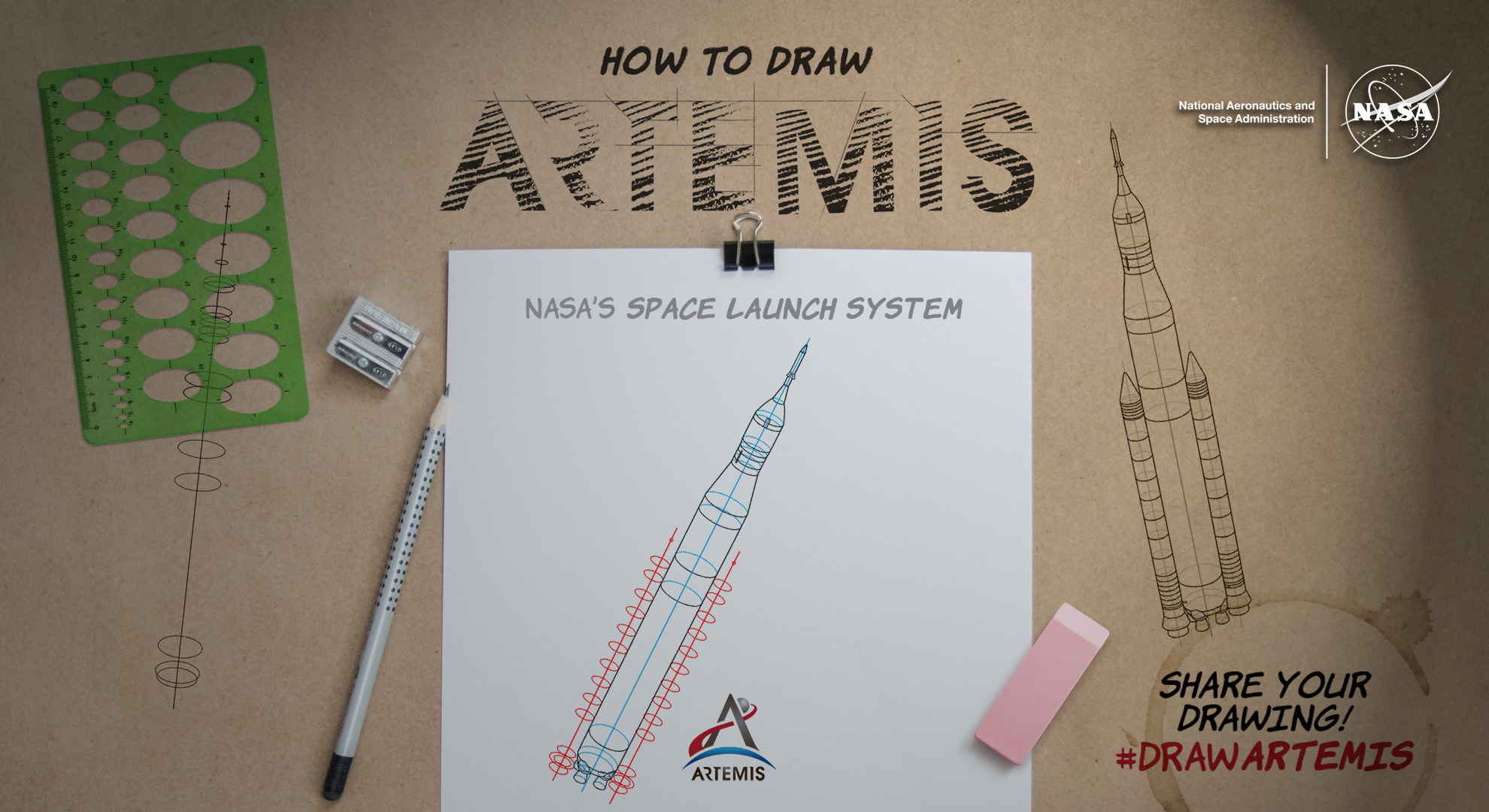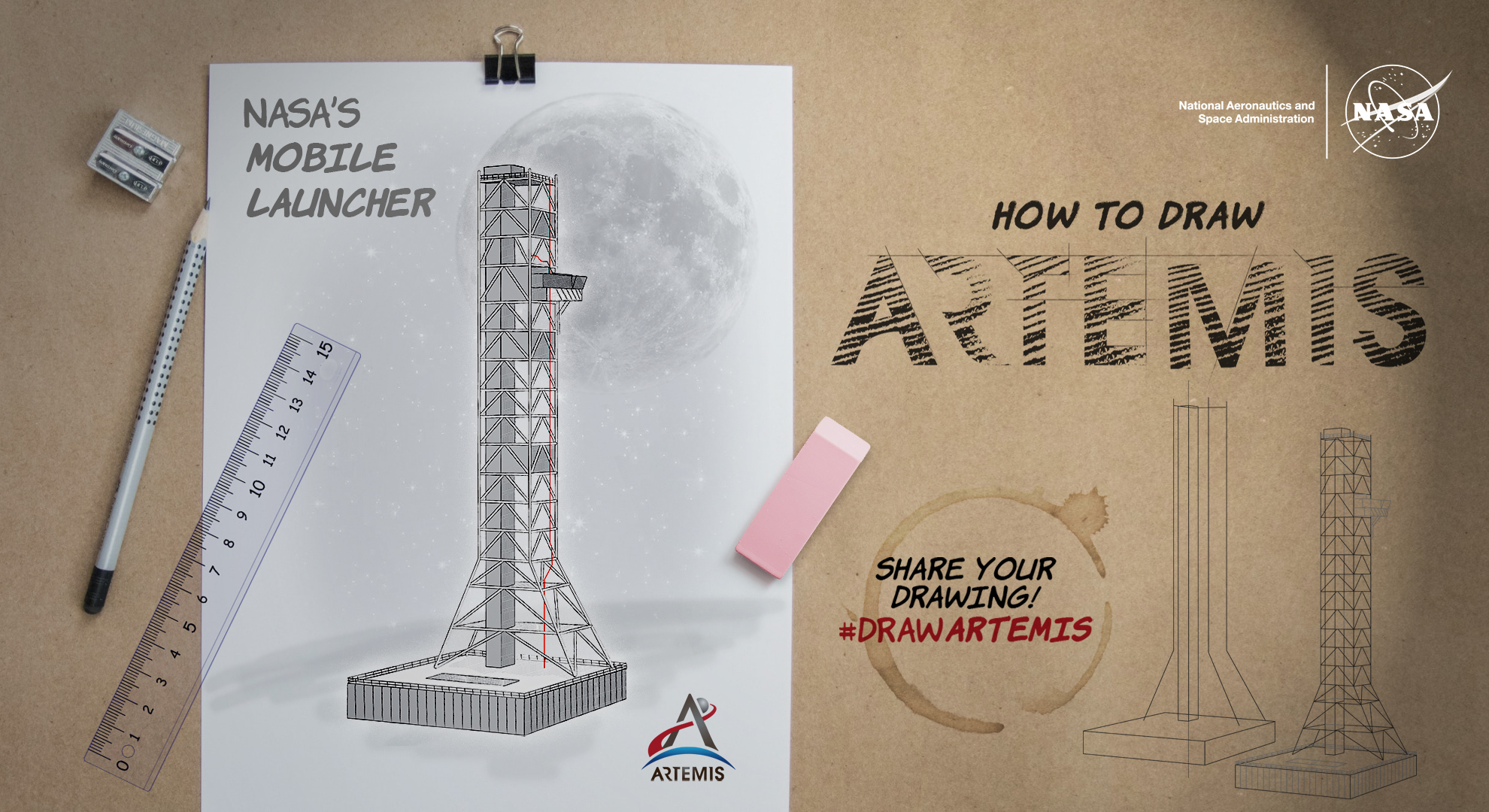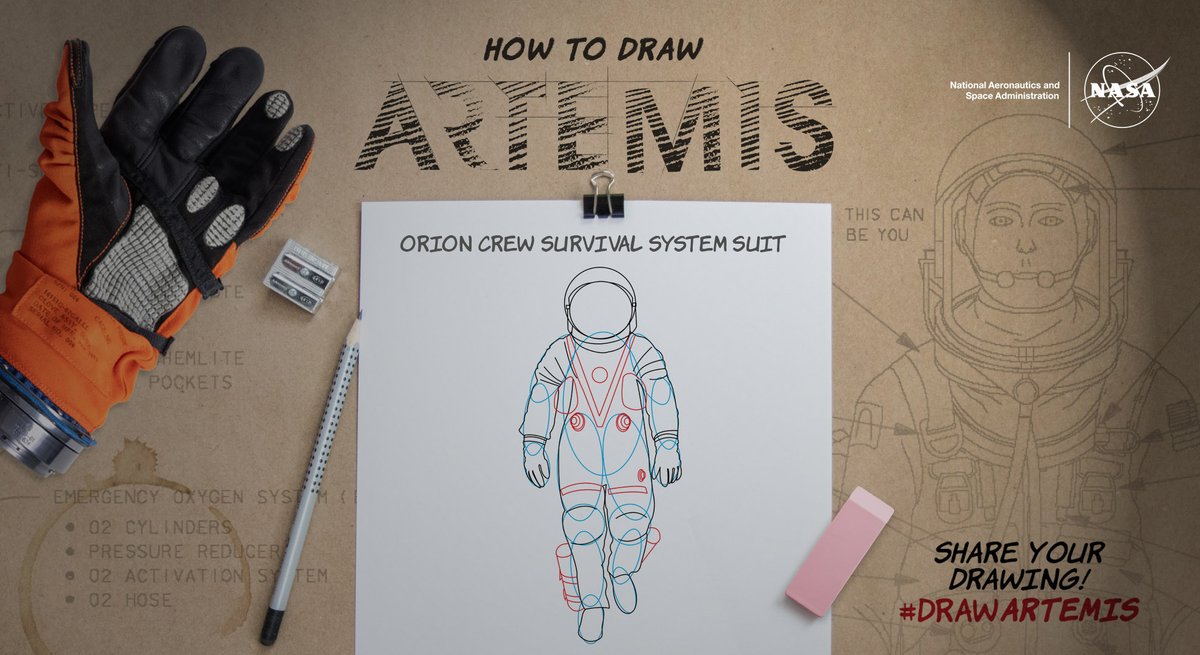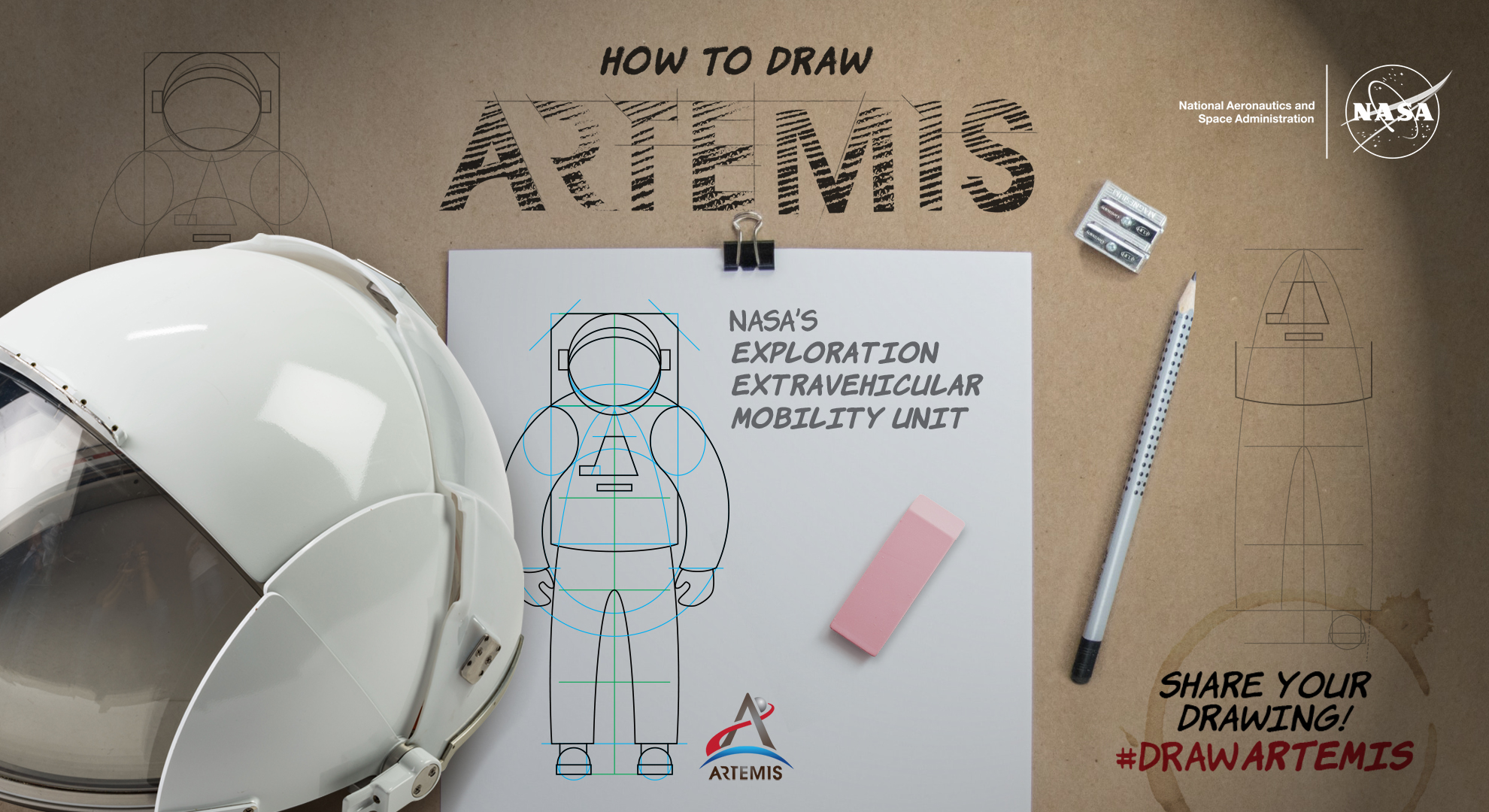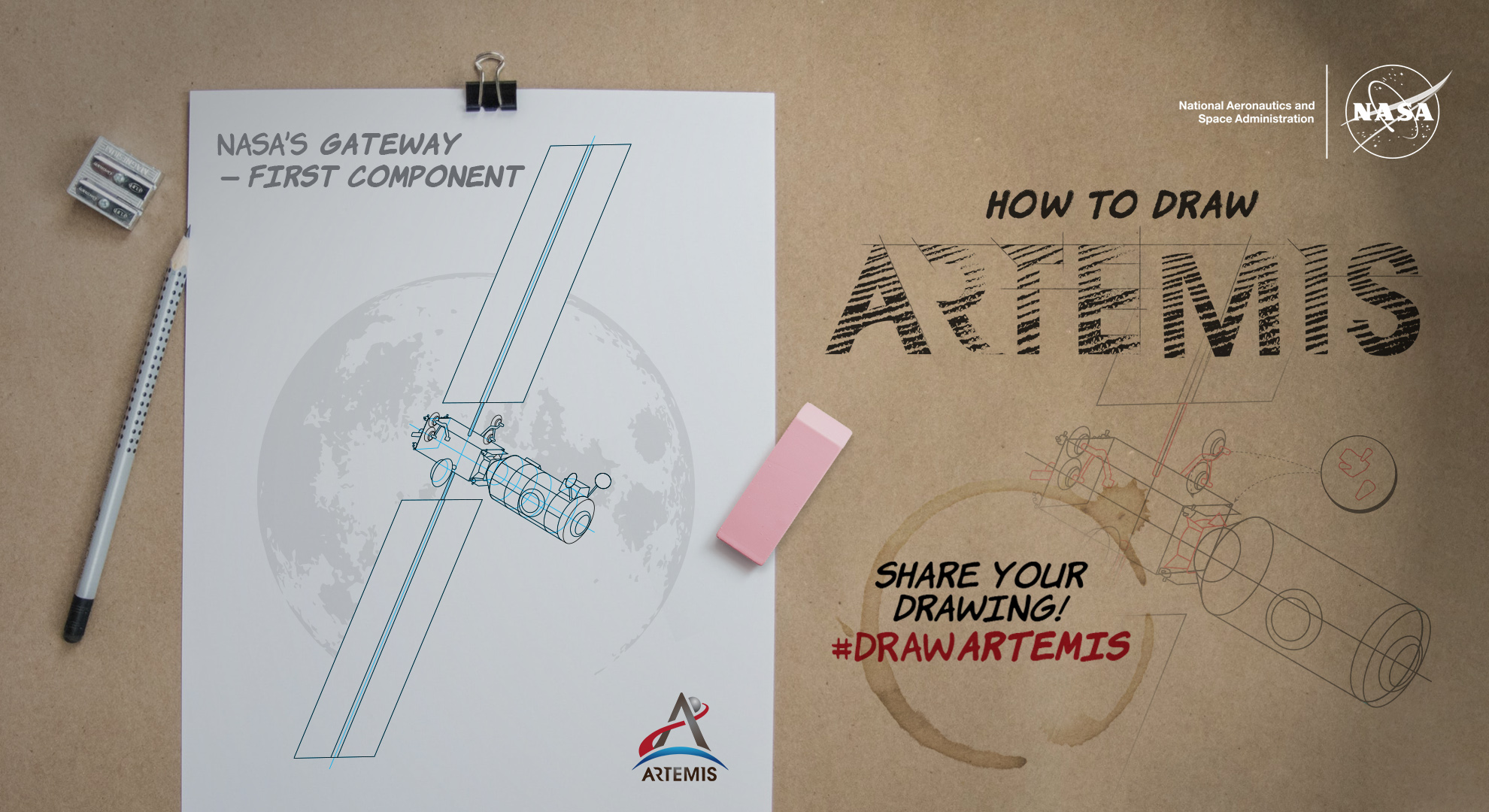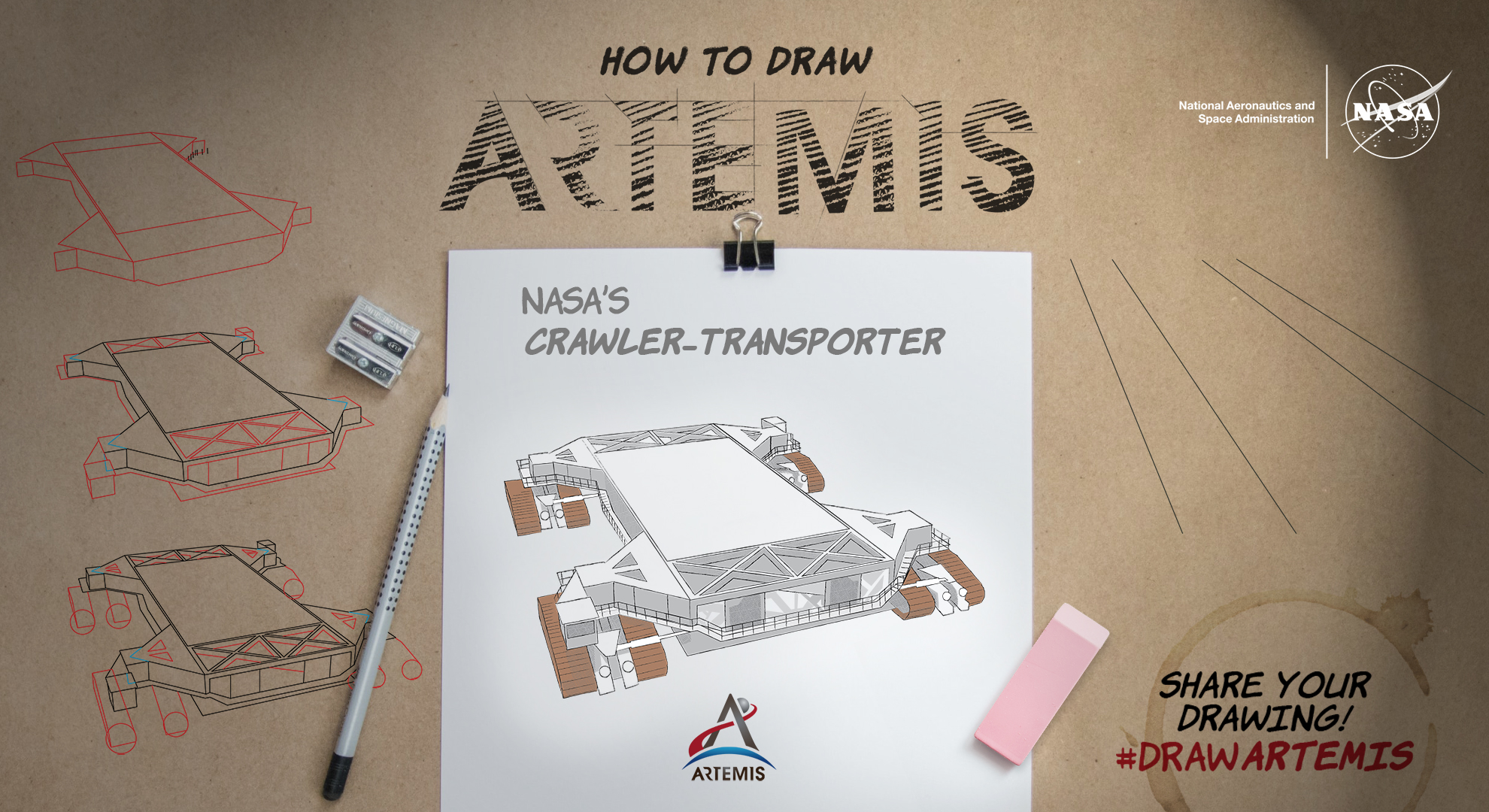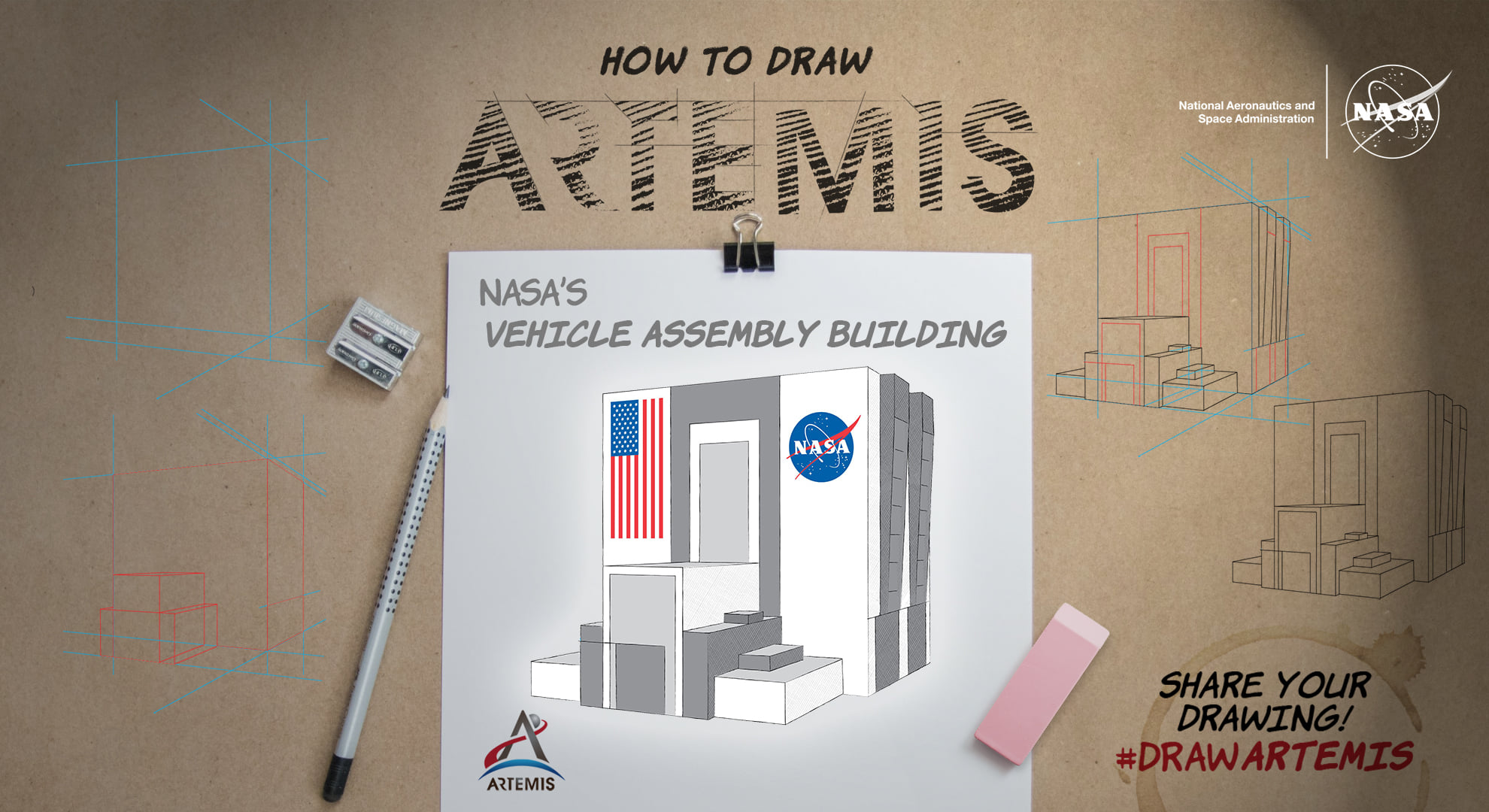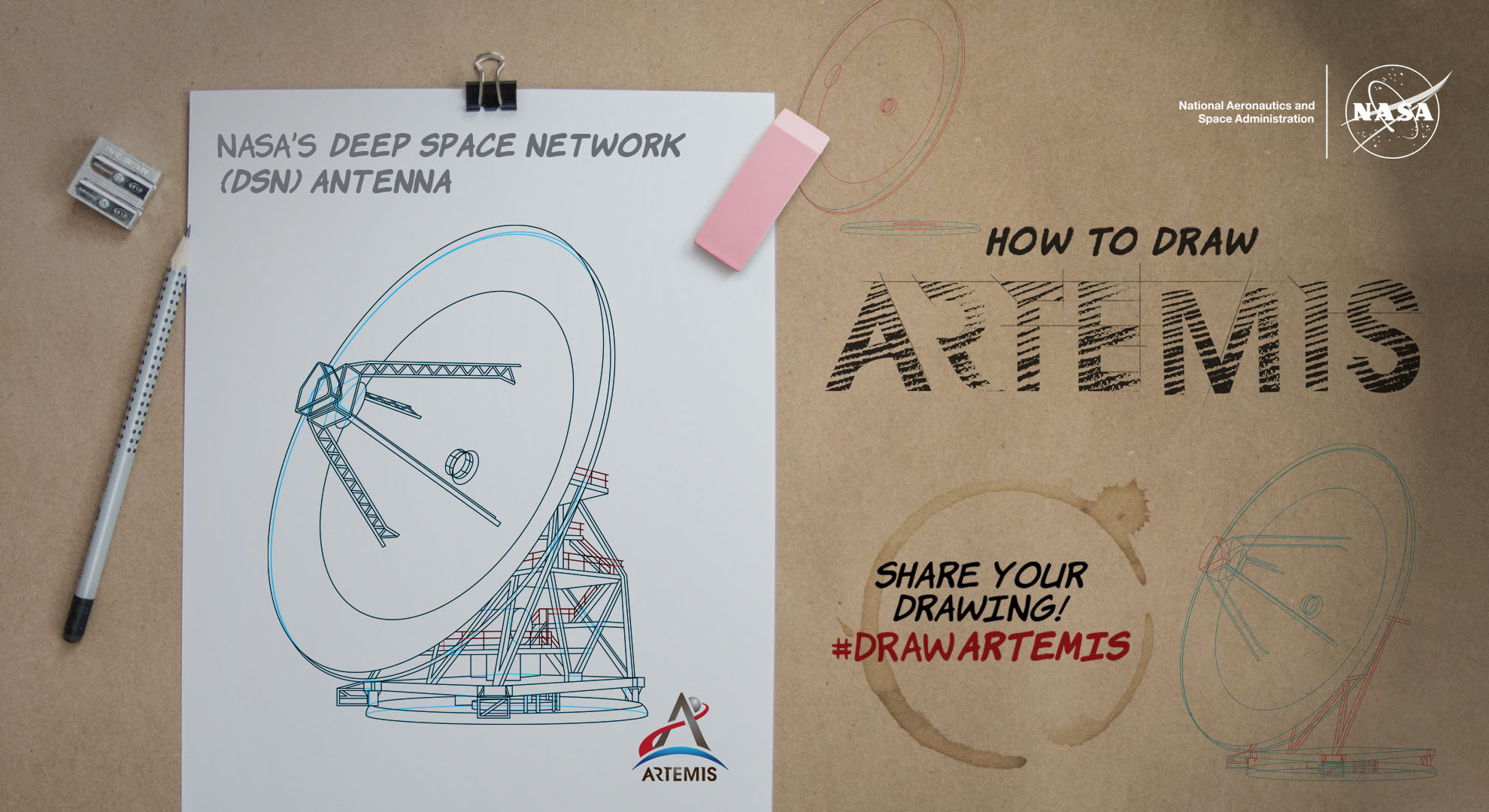Download and create Artemis illustrations of your own. Decorate your space with the systems that will take us to the Moon and beyond!
While NASA astronauts continue to live and work aboard the International Station, we are preparing for a new future in deep space. With the Artemis program, NASA will send the next American astronaut to the Moon to set foot once again, and will build an infrastructure to allow us to stay and prepare for missions to Mars.
Now you can learn to draw a fleet of sophisticated space hardware that will take us on Artemis Missions – similar to the way NASA engineers and technicians sketched out early concepts for space suits, rockets, spaceships, ground systems, and orbiting platforms that have allowed us to explore other worlds.
- Download your favorite – download them all! – and learn how to draw NASA’s deep space exploration systems that will power us to the Moon and beyond.
- Color your drawings to bring them to life
- Share your creation! Upload onto social media and tag #DrawArtemis and #NASAatHome
If you are posting on Instagram, also tag @NASAArtemis
Some ideas to spark your creativity:
- Draw your face into the helmet of a space suit
- Show the Space Launch System launching with fire roaring from its engines
- Place Orion near the Moon
- Draw Space Launch System standing on the Mobile Launcher Platform
- Include NASA and Artemis branding
- Draw them all and piece together into one exciting space scene
- Display your creation in a unique and interesting way
Learn more about the Artemis lunar exploration systems you are drawing!
Orion spacecraft
Orion is the vehicle that will take astronauts on Artemis missions. It’s the only spacecraft capable of human deep space flight and high-speed reentry from the vicinity of the Moon and Mars. More than just a crew module, Orion has a launch abort system to keep astronauts safe during an emergency launch, and a service module which is the powerhouse that fuels and propels Orion, and keeps astronauts alive with water, oxygen, power and temperature control.
Space Launch System (SLS) rocket
Getting to the Moon requires a powerful rocket ship to launch and accelerate a spacecraft fast enough to overcome the pull of Earth’s gravity and set it on a precise trajectory to its destination. NASA’s deep space rocket, the Space Launch System, will roll out on the Mobile Launcher and take off from the launch pad at NASA’s Kennedy Space Center on its first flight, Artemis I. It will produce a maximum 8.8 million pounds of thrust, exerting more power than any rocket ever. This power will help send the Orion spacecraft out beyond the Moon farther than any spacecraft built for humans has ever traveled before.
Mobile Launcher Platform (MLP)
Even though it weighs in at 10.5 million pounds, the 370-foot tall mobile launcher is just that, mobile! The moveable platform structure will hold the Space Launch System rocket and Orion spacecraft as the crawler transporter 2 takes the entire stack from the Vehicle Assembly Building out to Launch Pad 39B for Artemis I and other missions to the Moon. The mobile launcher consists of a two-story base and a tower equipped with a number of connection lines, called umbilicals, and launch accessories that will provide SLS and Orion with power, communications, coolant, fuel, and stabilization prior to launch.
Orion Crew Survival System (OCSS) Suit
The Orion Crew Survival System (OCSS aka “ox”) Suit is the launch, entry, and survival suit worn by the crew of the Orion capsule on Artemis Missions. The suit connects to the vehicle to enable crew safety by providing them with their own personal environment of gas flow and water cooling. In an emergency, the suit and vehicle act autonomously to maintain a personal protective atmosphere around the crew. This allows them to safely continue contingency operations for up to six days in the event of a deep space emergency.
Exploration Extravehicular Mobility Unit (xEMU)
Walking on the surface of the Moon requires the astronauts to wear a specially designed space suit, the Exploration Extravehicular Mobility Unit (xEMU), to protect against the harsh lunar environment and enable exploration. The new xEMU spacesuit is designed to be worn on the Moon, or another planetary surface. It will provide enhanced mobility for walking and kneeling. The spacesuit connects to the landers for recharging between moonwalks and can be resized to fit each astronaut.
Gateway
The Gateway – humanity’s first spacecraft to orbit the Moon – is a key element of NASA’s Artemis program. Along with commercial and international partners, NASA is building this new spaceship to support human and scientific exploration in deep space and prepare for missions to Mars. The first components of the Gateway include the Power and Propulsion Element (PPE) and the Habitation and Logistics Outpost. The PPE is the Gateway’s powerhouse, using its solar electric propulsion system to maintain its position around the Moon and provide power to other Gateway modules. The HALO will be the initial home-away-from-home for Artemis astronauts, doubling as a laboratory to conduct a new era of deep space science investigations.
Crawler
Traveling at less than one mile an hour on average, the crawler transporter lives up to its name. NASA has a pair of behemoth machines that carry the load when a launch platform and stacked launch vehicle go out to the launch pad. Crawler Transporter 2 will take the mobile launcher, Space Launch System and Orion spacecraft to Launch Pad 39B for Artemis I as well as future Artemis missions when the first woman and the next man go to the Moon
Lunar Terrain Vehicle
Expanding the exploration footprints of the first woman and the next man on the Moon is an important part of the Artemis mission. NASA’s Lunar Terrain Vehicle (LTV) will allow astronauts to explore larger areas of the lunar surface than by foot alone, carry more equipment, collect more samples, and do more science. Autonomous driving, advanced energy storage, and the ability to survive the Moon’s harsh environment are all top priorities for the LTV.
Vehicle Assembly Building (VAB)
The iconic Vehicle Assembly Building, better known as the VAB, is where NASA will stack the Space Launch System rocket and Orion spacecraft for Artemis missions to the Moon and beyond. One of the largest buildings in the world by volume, the VAB was built for the Apollo missions and served as the final assembly point for all of the space shuttle missions. Seen from miles away due to its height and location, the VAB serves as the central hub of Kennedy Space Center.
Deep Space Network (DSN)
When it comes to making a long-distance call, it’s hard to top NASA’s Deep Space Network. It’s the largest and most sensitive scientific telecommunications system in the world. The Deep Space Network – or DSN – is NASA’s international array of giant antennas that supports interplanetary spacecraft missions, plus a few that orbit Earth. The DSN also provides radar and radio astronomy observations that improve our understanding of the solar system and the larger universe. The DSN consists of three facilities at Goldstone, near Barstow, California; near Madrid, Spain; and near Canberra, Australia. The strategic placement of these sites permits constant communication with spacecraft as our planet rotates – before a distant spacecraft sinks below the horizon at one DSN site, another site can pick up the signal and carry on communicating. The antennas of the Deep Space Network are the indispensable link to explorers venturing beyond Earth. They provide the crucial connection for commanding our spacecraft and receiving their never before seen images and scientific information propelling our understanding of the universe, our solar system and ultimately, our place within it.
Launch Pad 39B
NASA’s Launch Pad 39B at Kennedy Space Center has a historic past, supporting missions from the Apollo and Space Shuttle Programs. Now it’s ready to support NASA’s first Artemis mission to the Moon. Once NASA’s Space Launch System rocket and Orion spacecraft are stacked and assembled inside the Vehicle Assembly Building, they’ll make the 4.2-mile trek on the mobile launcher and crawler to Pad 39B for liftoff. This is the final stop for SLS and Orion before their journey to the Moon, Mars, and beyond.
Love to color? Check out these cool art projects from our friends at NASA:
NASA Science Coloring Projects – looking deep into the solar system and universe, helping to provide us with a better understanding of our home planet and destinations that we will explore on future Artemis Missions. Tag your creations with #NASAatHomeand #ColorWithNASA!
- Exoplanet coloring pages – planets beyond our solar system
- TESS coloring book – inspired by NASA’s exoplanet hunting space telescope
- Juno mission coloring book – humanity’s ride to Jupiter, our solar system’s largest gas giant
- Space Place coloring pages – planets in our solar system and Mars exploration vehicles
NASA Space Technologies are driving exploration, improving our ability to go, land, live and explore space, while spurring innovation that benefits the economy and life on Earth.
- Hypersonic Inflatable Aerodynamic Decelerator – a new NASA heat shield is inflatable!
- Autonomous Pop-Up Flat Folding Explorer Robot – a new NASA robot will be able to go where other rovers cannot.



























